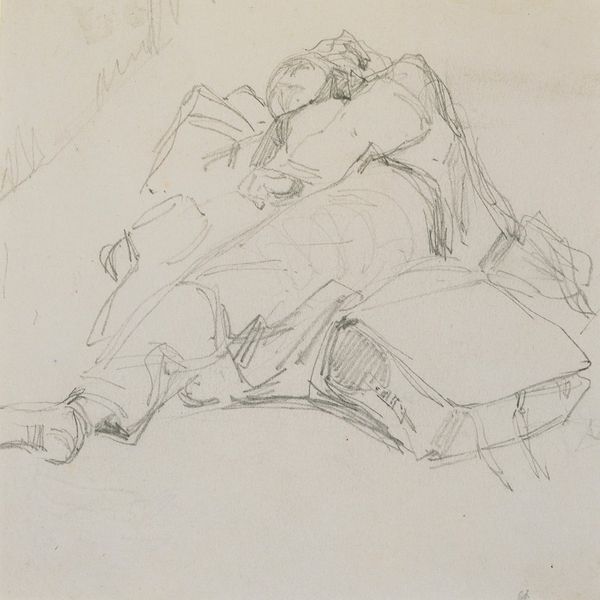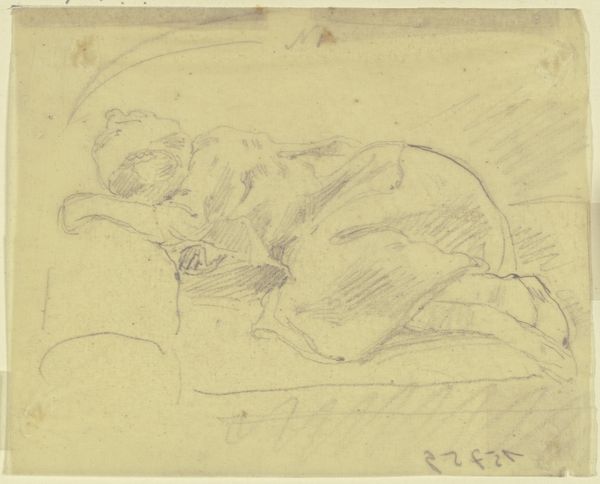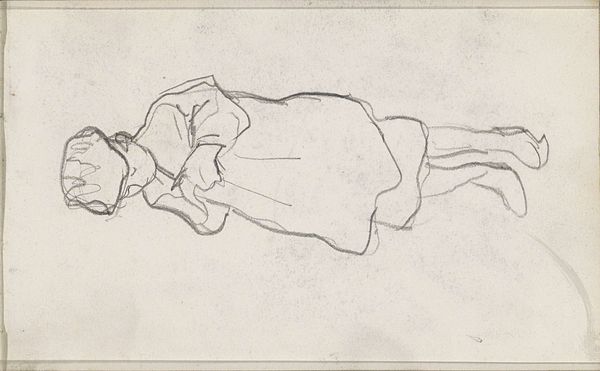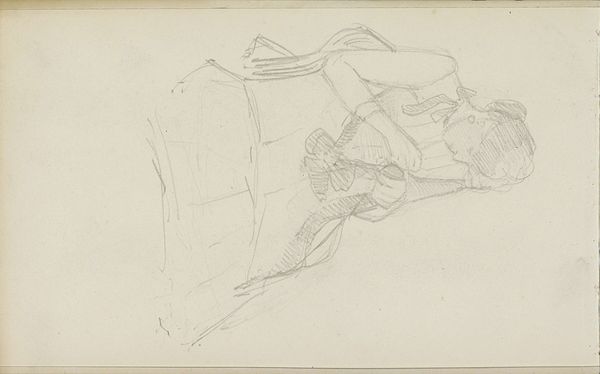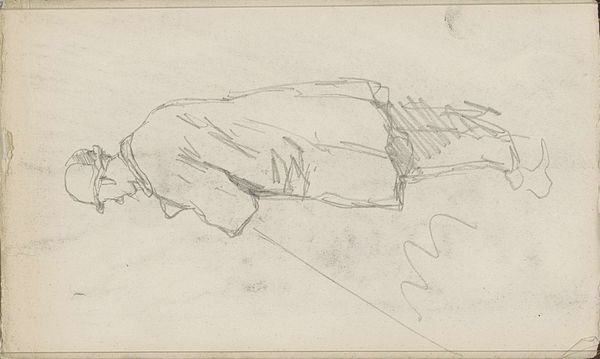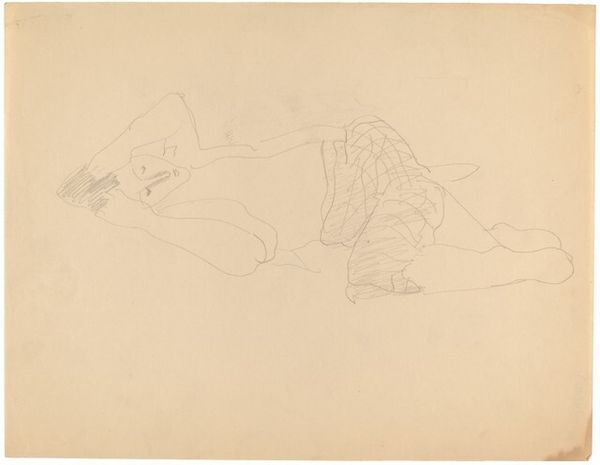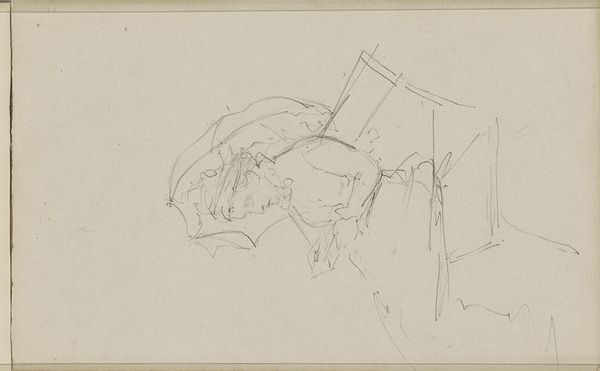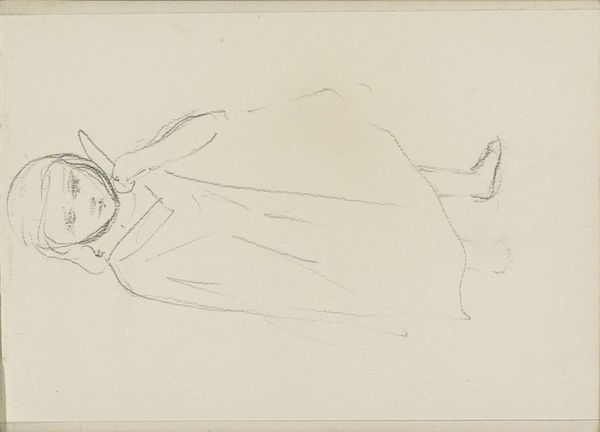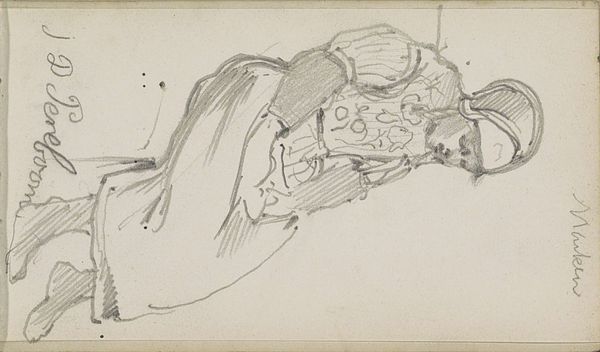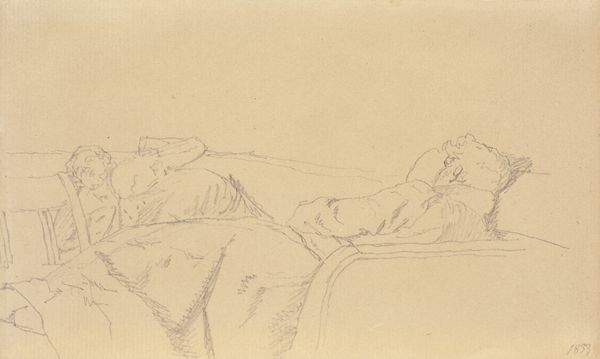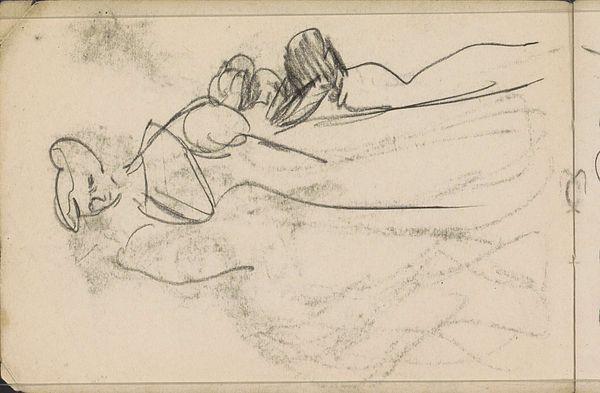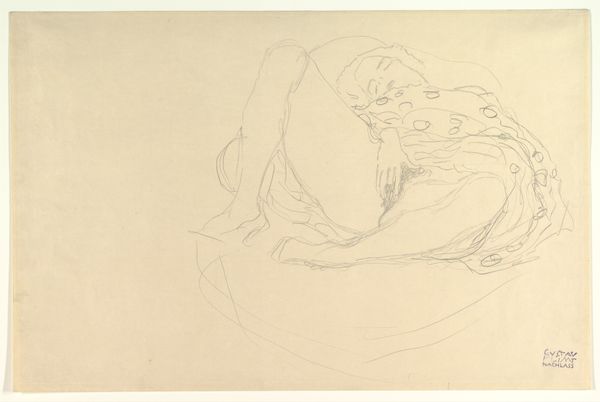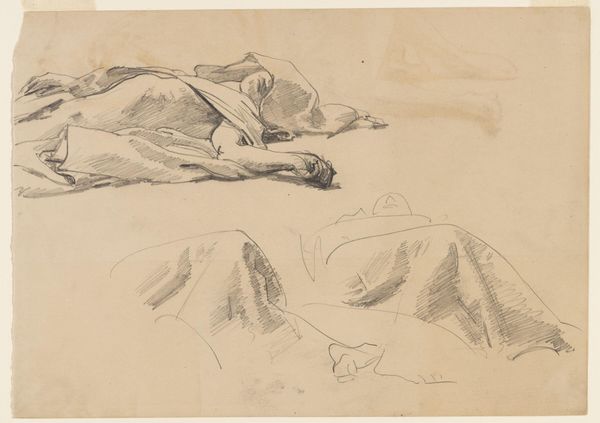
drawing
#
drawing
#
amateur sketch
#
light pencil work
#
pencil sketch
#
personal sketchbook
#
idea generation sketch
#
ink drawing experimentation
#
pen-ink sketch
#
sketchbook drawing
#
pencil work
#
initial sketch
Dimensions: overall: 36.8 x 55.8 cm (14 1/2 x 21 15/16 in.)
Copyright: National Gallery of Art: CC0 1.0
Curator: I see a certain melancholy, a vulnerability…like peering into a private, perhaps even troubled moment. Editor: We're looking at Gustav Klimt's "Curled up Girl on Bed," sketched between 1916 and 1917. What strikes me first is the deliberate mark-making—the layering of pencil lines suggests a process of refinement, almost as though he's searching for the right form through material exploration. Curator: It definitely feels like a preliminary study; almost like a fleeting observation captured quickly. You can almost feel the texture of the paper itself… the grain seems very important here. Editor: Exactly! The very lightness of the sketch conveys that immediacy and invites reflection on his labor. I’m curious about who she might have been: could she have been a model he had in the studio? How did the act of portraying such a subject translate to the end products or what was made to be shown as finished product, or his famous series of female portraits? Curator: Considering the period—late-war Vienna—perhaps this also says something about the socio-economic realities for working-class women; for example, models who would rely on painting commissions in an urban landscape. Perhaps they were involved with providing the labour behind the war effort themselves… or Klimt may have noticed an air of exhaustion reflecting the war, and found beauty or pathos there. Editor: A really potent perspective. You know, Klimt often challenged societal norms through his art. What materials did Klimt choose to emphasize or elevate, and what sort of "ordinary" objects did Klimt select to represent through his sketches? He moved between very precious materials for patrons, and using something common like pencil and paper, which allowed exploration of working class subjects in between paintings of wealthier ones. The act of choosing such accessible materials for initial design sketches brings forward these discussions to make artworks for specific clients or subjects within this urban community Curator: So, beyond a beautiful artwork, it provides valuable commentary on how economic conditions intersected the material culture of artistic practice during times of turbulence Editor: Agreed. It invites further analysis and questioning.
Comments
No comments
Be the first to comment and join the conversation on the ultimate creative platform.
